Take the b7 of the ii chord (D-7) and lower by 1/2 step. This gives you a dom.9 chord with no root. This is a sub for the V chord in the 2-5 sequence.
This exercise is helping me greatly to learn all the inversions shown here. I go to the page of the Minor 7 chords and start on a chord in a column. I know where the roots of these inversions are, but now I need to learn where the b7th is for each one.
Moving the b7 of the min7 a half-step gives me a rootless ninth chord.
This fingering is also synonymous with a min7b5, so I will take some time to visualize that chord, and where its root is. The finger you just moved down from the ii chord is the third of the ninth chord. But it is also the root of the min7b5 chord with the same shape.
The root of this chord is a half-step down from the note you just moved. This fingering is synonymous with a diminished chord, which is a moveable chord, repeating every four semi-tones. The root of a diminished chord could fall on any of these notes.
Now we need to find the Maj7 to resolve to on the last measure. If you can remember where the root of the first chord you started with (the minor ii chord), the root of the I7 is just a whole-step down from that. Now try and remember what shape you can apply for a Maj7 with that note as the root. For the purposes of this exercise, the shape should be in the same string grouping as your other chords.
For the fourth and last measure of our 2-5-1, we can change the Maj7 to a Maj6. This means we have to learn where the P7 is in each of these Major chord shapes. Once we find that, we can move that note down a whole-step to the 6 (or 13, if you like to call it that).
Now that you are on a Maj6, which is essentially a min7, you can start the whole routine again with the min7 shape as the new ii chord.
If you do this for all the inversions for the 6432, 4321, 5432, 6543, and 5321 groupings, you will be reinforcing all the shapes for Min7, Maj7, Dom9, Dom7(b9), Min7b5, Diminished, and Maj6 chords! We are also learning where 7ths, 9s, and b9s live. This is also a practical exercise -- you can use it to comp over any 2-5-1 progression. Finally, you will start hearing the voice-leading and learn how the b9 fits in, just through sheer exposure.
You can alter this process to also reinforce the Dominant chord fingerings by doing a second pass on each 2-5-1 with a 'tritone substitution.' Instead of changing from Dom9 to Dom7(b9) in the second measure, we will play a substitution for the V7 chord, whose root is a tritone away from the V7. It is easier than it sounds.
The root of the subsititue V7 chord will always lie between the root of the ii chord and the root of the I7 chord. So start with a minor shape for the first measure. The root of your V sub will be a half-step down from the root of the minor ii you just played. Find the Dominant chord fingering that goes with that root -- that is the Dominant tritone sub.
If you do one pass with the flat-nine movement and one pass with the tritone sub, you will be covering just about all of your basic inversions!
If you go through them again with a minor 2-5-1, you can throw in your minor sixes also. You will probably ignore the dom9 chord and just hit the dom7(b9) for the second measure, though. I'll leave that to you to work out.
| two-five_voiceleading.pdf |
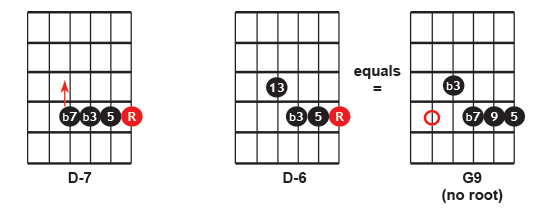
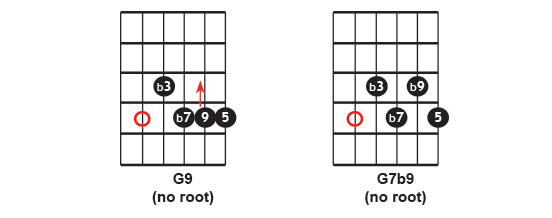
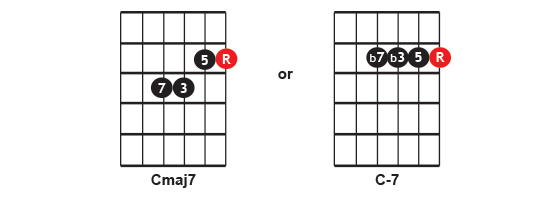
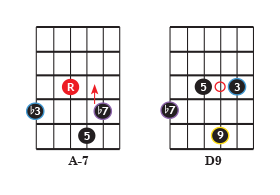
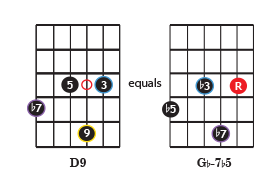
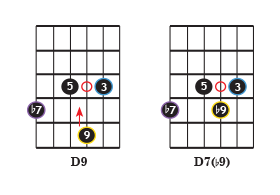
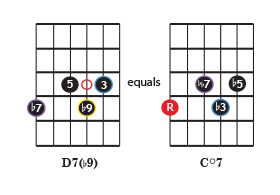
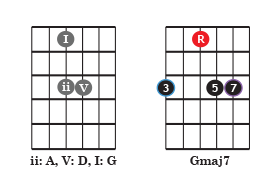
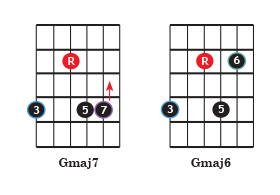
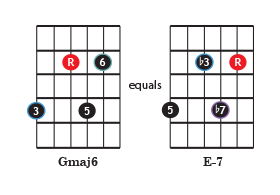
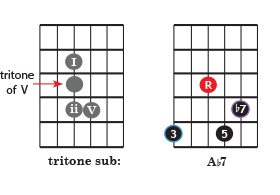
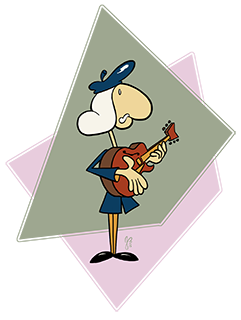
 RSS Feed
RSS Feed
